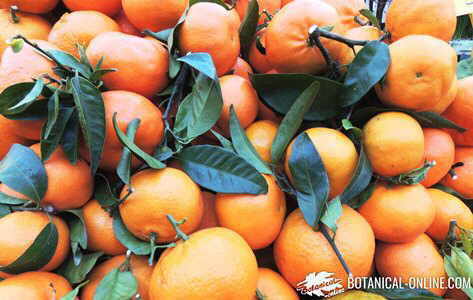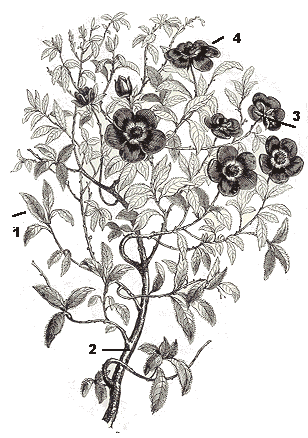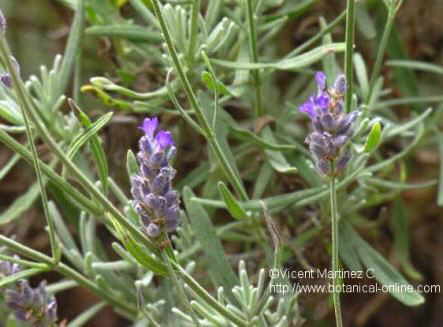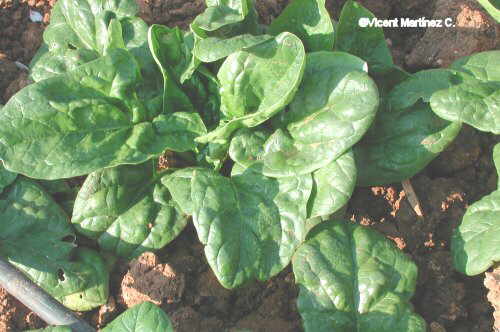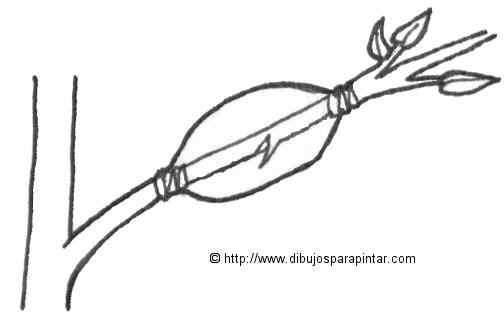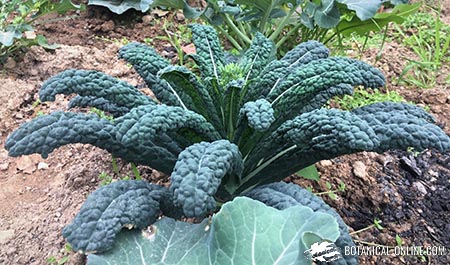Contents
HOW TO GROW OAK TREES
How is a Quercus robur like?
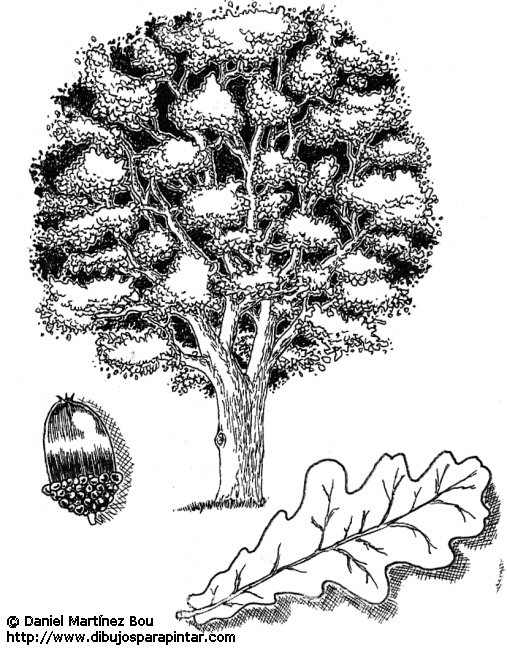
Oak drawing with an acorn and a leaf
Evergreen tree of the Fagaceae family up to 45 m in height.
Erect stems with the bark full of cracks and wrinkles, light gray in youth and darker as the tree gets older.
Leaves alternate, lobed, sessile, with rounded lobes and very short petioles, provided with two auricles at the base larger than the petiole up to about 12 cm.
Flowers in catkins, yellow-green color.
Fruit in nut (acorns), gathered in groups of 1-3 on the same stalk.
 Oak irrigation and moisture
Oak irrigation and moisture
Quercus robur needs to have adequate soil moisture. It prefers places with a rainfall about 600 and 1000 liters per year. However, it does not support flooded soils.
It does not like too dry summers and low humidity environments, but it resists drought if well adapted.
It prefers wetlands and places where there is moisture in the air, for this reason, it can be found in the slopes of the forest with other trees that can retain soil moisture. It is unusual to see it growing in gullies along the waterways.
 Oak: Use, varieties and species
Oak: Use, varieties and species
Oaks are trees that are mainly used for timber. The English oak wood has a lot of quality and it is fit for carpentry and furniture making. It has also been traditionally used to make tools. Its bark and leaves have medicinal properties.
* For more information on these issues see the listing below, where a detailed study of their use, species of oak and therapeutic uses of this plant is offered.
In gardening, this plant is used as a tree for squares and large gardens. It has a very large size which can reach 40 meters and produces a wide crown so you need space. The set of roots is very long and very powerful and can damage buildings when planted next to them.
 Oak: Temperature and exposure
Oak: Temperature and exposure
Oaks prefer a sunny exposure when developed, although, when they are very young, some shade can be better. They dislike too hot areas in summer because temperatures above 25 ° C are not suitable for them.
It is quite resistant to cold and can withstand up to -15 ° C., although its ideal temperature is between 18 and 20 ° C. It can be planted in locations where high winds occur, although it does not support saline sea winds.
Oaks: Reproduction. Planting and pruning
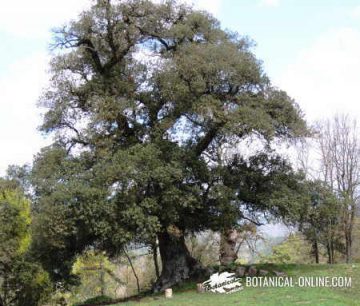
Oaks can be obtained from seed in late winter. Seeds of these trees should not let it dry quickly not to lose their germination power. It is best to plant them fresh directly at the final location.
Although it can be planted in the nursery, its main root is so deep that it prefers to be transplanted quickly. It should not be allowed to grow out of its final location over two years. It is a type of tree that should not be transplanted because it is very difficult not to harm its long roots which determines that, in most cases, it can not be adapted to the new locations.
If you prefer to plant it in a container, it is best to choose deep ones, at least 10 cm deep. The soil should be well loose so that the seed can be inserted a few centimeters, then it should be covered with soil and a little manure.
The plant will be watered well and left in a place where the temperature moves between 12 and 15 ° C. To attain this, the container should have to be placed in the greenhouse or in a box covered with a crystal garden in most cases.
In order that oak seeds seeds can germinate better, they should be scarified. Scarification in this case involves making a small incision with a razor blade or a knife to allow moisture to penetrate into the inside of it and start the germination process.
Oaks should not be pruned more than just enough to remove those branches that are damaged.
 Oaks: Types of soil and fertilizers
Oaks: Types of soil and fertilizers
They prefer deep, moist, well drained soils. They should not be planted in shallow soil.
They also prefers clay soils or calcareous soil and do not like acidic soil rich in peat.
Oaks: Pests and diseases
The main diseases that affect them are:
- Black rust: A disease characterized by the appearance of a black coating on the leaves. It occurs as a result of mold growing on the liquid produced by aphids or sucking sap scale insects. They must be fumigated with the right products for each of them which is practically impossible in the case of large trees.
- Anthracnose: A disease caused by fungus Apiognomia that affects branches and leaves when the weather is very humid. It produces light brown lesions on the midrib or sides of the leaves that can extend, which causes the leaves fall. Treatment requires the use of specific copper products and the destruction of contaminated leaves.
- Powdery Mildew: (Oidium or Uncinula) A kind of powdery mildew on the leaves, which causes the leaves to turn yellow and fall. This disease is caused by fungi when situations of moisture in the soil and air are very low. The solution lies in finding wetter sites and treat the plants with an appropriate fungicide.
- Nectria canker (Nectria galligena) A disease caused by fungi that attack wood producing cankers on the bark which eventually open. This results in an impossibility of sap to pass toward the external vegetative parts of the affected oak that eventually dies. It is caused by the infection of the plant with the mentioned fungus when the tree is pruned or because of wounds inflicted by frost or woolly aphids. The solution is to cut the affected wood and cover it with paint for tree cankers and treat the affected tree with an appropriate fungicide.
- Sudden oak death: It is a plague that affects oaks in United States although individuals with the same disease have already been found in Germany and England. It is produced by molds of the genus Phytophthora. The disease begins with the weakening of the young shoots, leaves turn brown and dry. The logs produce cankers that exudate. The plant dies quickly. There is no cure for this disease.
- Chalariosis: A disease caused by the fungus Ceratocystis fagacearum affecting mainly oaks. It affects the transport of sap which causes the death of the plant. Early symptoms affect the leaves that become yellow and fall. Treatment requires an appropriate fungicide and burning the affected trees. It is a disease that has not yet occurred in European oak but it is widespread in the United States.
- Chlorosis: It happens in oaks planted in areas with very high pH or highly compacted soil. This prevents the adequate absorption of minerals, especially iron which determines the leaves to turn yellow. The treatment involves the preparation of the terrain by means of soil removal or the application of suitable minerals. The latter is done by applying foliar fertilizers in several treatments, or the implantation in the wood of plastic capsules containing a ferric solution that will be absorbed by the tree.
- Root rot: This occurs in older oaks, being very difficult to diagnose because it is generally only seen when strong winds break down the diseased trees.
Oaks pests
- Gall wasps (Amphibolips and Diplolepis) They are Cynipidae insects that produce galls on any part of the tree. These are brown and have a diameter of about 1.5 cm. In general, they do not usually affect the tree. When they are very abundant they require specific treatment. Sometimes some of these galls may even be commercially interesting as those caused by Hymenoptera Cynips gallaetinctoriae used for the production of tannins.
- Lepidoptera. Many butterfly larvae feed on the tender shoots of these trees.
![]() More information on oak.
More information on oak.

 Oak irrigation and moisture
Oak irrigation and moisture